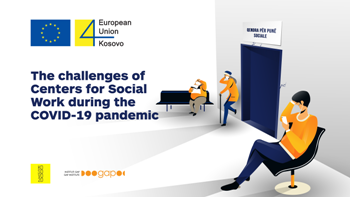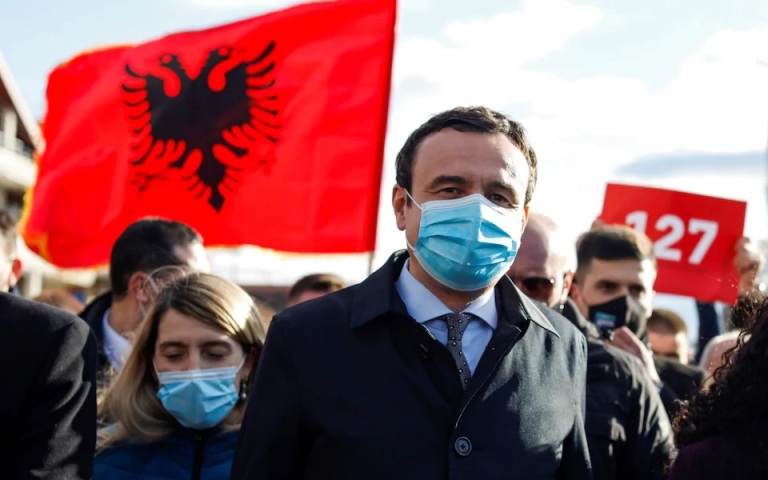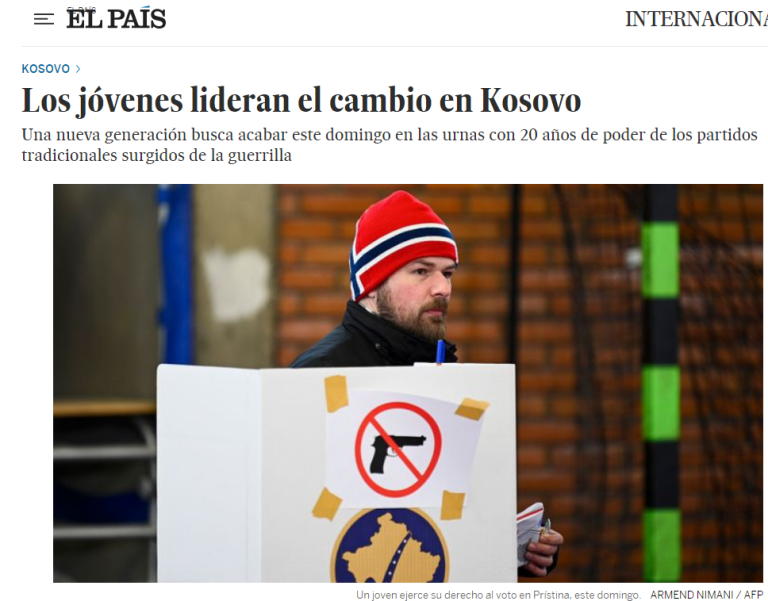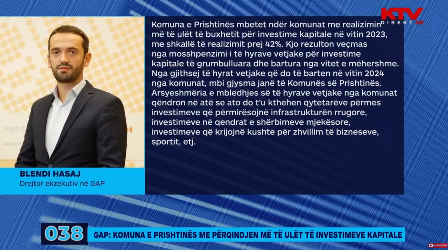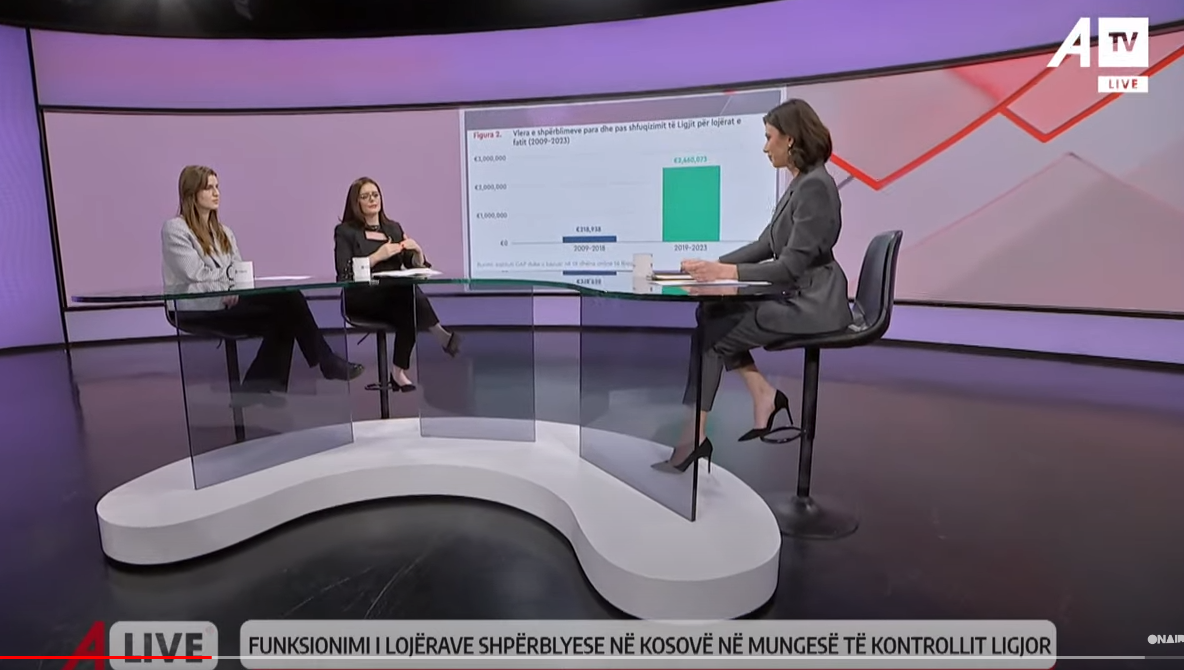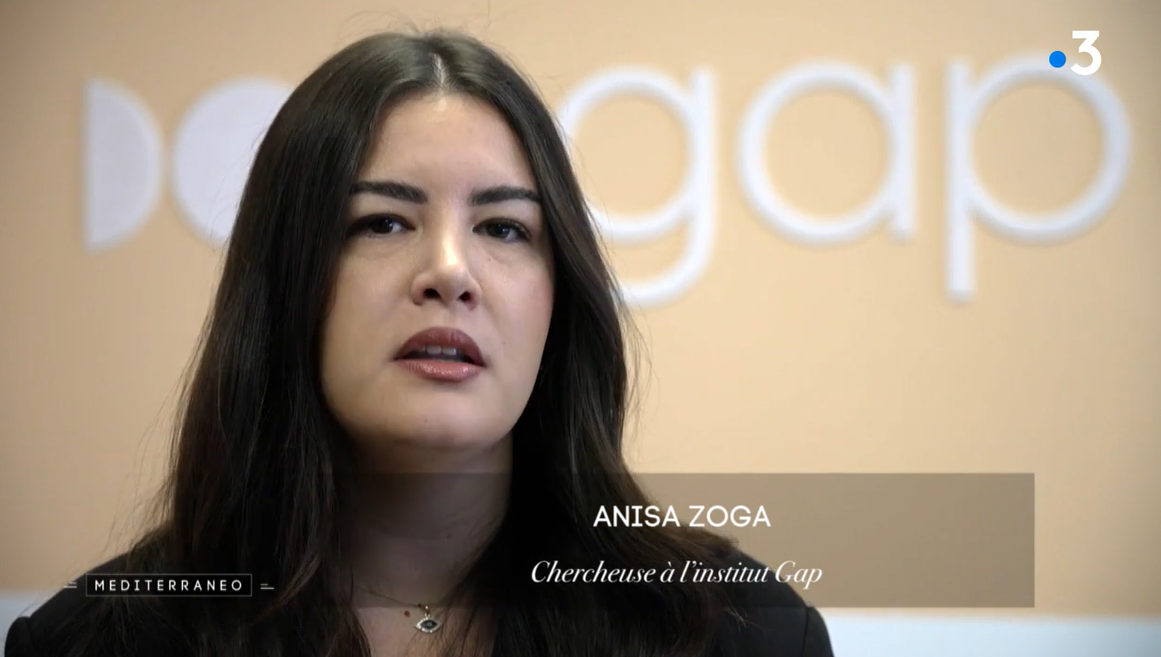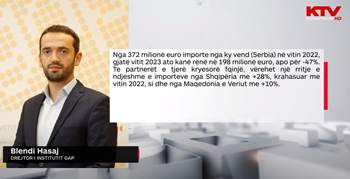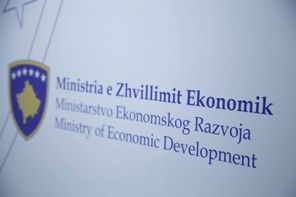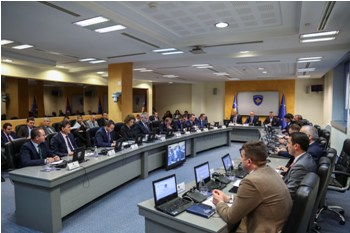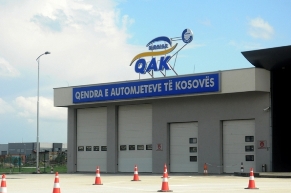Is there partisan based budget planning?
23/11/2016
On October 31, 2016, the Government of Kosovo approved the Draft Budget of the Republic of Kosovo for 2017. According to the Law on Public Financial Management and Accountability, after the adoption of the draft budget, the Government of Kosovo shall submit this document to the Assembly no later than on 31st of October of the same fiscal year[1]. The 2017 draft budget was to be discussed by the Budget and Finance Committee on November 9, but this point of the agenda was postponed for a week on the grounds that the assembly had problems printing the necessary materials.
Although this was the official justification, the Deputy Finance Minister Mr. Isni Kilaj who is part of the Democratic Party of Kosovo (PDK), the governing party along with the Democratic League of Kosovo (LDK), criticized the budget for being unrealistic and oriented towards the realization of the political promises of LDK. On November 21, the Budget and Finance Committee removed the draft budget review from the agenda until PDK members of parliament clarify their demands.
To avoid partisan based budget allocation, GAP Institute has previously addressed the necessity of publishing accompanying documents of the draft budget which would help to clearly connect policies with budget allocations. Difficulties to understand the budget and the lack of connections between budgetary programs and policies were also addressed by the European Commission Report on Kosovo for 2016. According to this report, there is a lack of transparency in budget planning as well. In a GAP infographic regarding capital investment allocations in the 2016 budget, we noticed that there is no clear criterion connecting the allocation of the central level capital investments with municipality needs, be it population size, territorial size, or stage of development.
Given the lack of criteria, the budget leaves room for investment orientation on party basis. Therefore, the purpose of this budget brief is to see which share of the budget is allocated to which party.
As seen in figure 1, in 2017 LDK will manage 80% of the budget allocated per ministry. That"s because it governs the three ministries with the largest budget share, such as: the Ministry of Labour and Social Welfare (375.5 million euro), the Ministry of Infrastructure (267.9 million euro) and the Ministry of Internal Affairs (114.5 million euro).
Figure 1. Ministry budget allocation by party affiliation 2016-2017
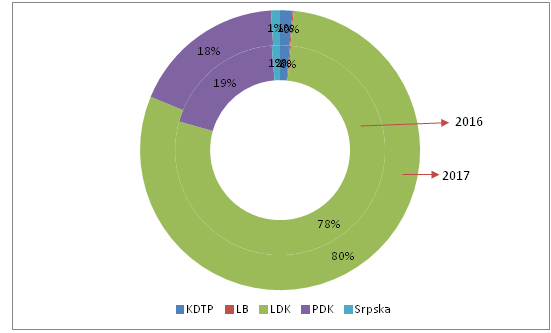
Compared to last year, the budget of the ministries managed by LDK has increased by 141 million euro, or 17%, while the one managed by PDK has increased by 9.7 million euro or 5%. If we look at the budget allocation based on the weight of the budget, in 2017, LDK will manage 80% ministry budgets compared to the 78% it managed last year, while PDK will manage 18% of ministry budgets compared to the 19% it managed last year.
Figure 2. Changes in ministry budgets based on political affiliation
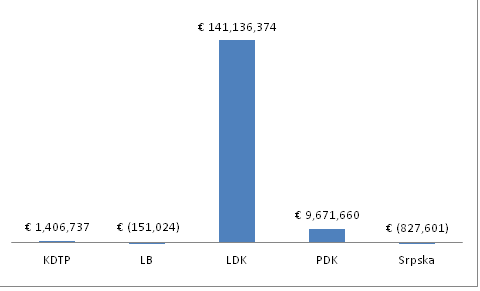
Another measurement of a partisan based budget allocation is the orientation of some ministries’capital investment at the local level. Given that the Ministry of Infrastructure manages about 47% of the capital investment of the Government of Kosovo, we have classified orientation MI"s investments by municipalities. Of about 23.6 million euros MI which will be invested in the municipality, about 52.1% of them will be invested in the municipalities managed by LDK, compared with 56.2% as they were last year. In municipalities that manages streaming LDK 34.5% of Kosovo"s population and 31.9% of the occupied territory. In municipalities governed by PDK will invest 26% of the budget, compared with 21.8% in last year. In municipalities governed by PDK 33.7% of the population live, or in geographic size 31.1% of the territory of Kosovo.
Figure 3. Percentage allocation of capital investments in municipalities by MI
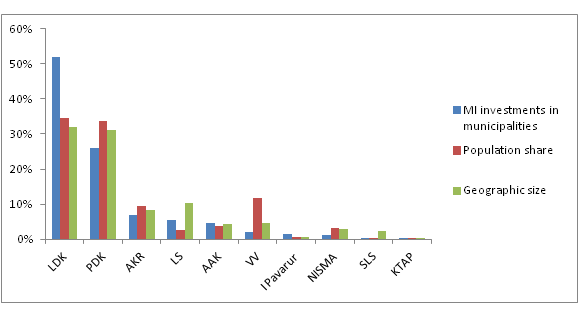
If we look at the difference between the percentage of capital investments and the percentage of population living in the municipality, it appears that the Municipality of Prishtina is the most negatively discriminated (by a difference of 9.7%), while the municipalities managed by LDK were positively discriminated (by a difference of 17.6%).
Compared to 2016, in 2017, in the municipalities governed by LDK, investments will increase by 570 thousand euro or 5%; whereas, in the municipalities governed by the PDK, investments will increase by 1.6 million euro or 35%; in the municipality governed by VV, investments will increase by 285 thousand euro or 16%.
In conclusion, the criteria for budget allocation in all ministries and a clear connection between policy implementation and budget allocation are missing. Compared to last year, the budget managed by LDK ministries will increase significantly. Regarding the local level institutions, based on the MI"s investments, municipalities managed by LDK will benefit significantly more investments which is disproportionate to the population or geographical size. These investments may be reasonable, given that these municipal projects might be prioritized due to potential greater economic returns, but in the absence of criteria and additional information one cannot soundly make such a judgment. Therefore, GAP Institute continues to demand increased transparency in budget planning by the Ministry of Finance and concrete link between strategic policies and the state budget.



